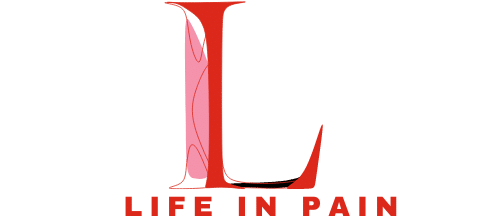How to use thermal imaging and other advanced technologies for energy efficiency audits in real estate?

With the rising global awareness on environmental sustainability and the increasing cost of energy, energy efficiency has become a crucial part of our daily lives. Not only does it support environmental conservation, but it also helps reduce costly energy bills. In the real estate industry, energy audits are a practical method to achieve efficiency in energy usage. They involve an in-depth analysis of a building’s energy systems. This article will guide you on how to utilize thermal imaging and other cutting-edge technologies in carrying out energy efficiency audits.
The Importance of Energy Efficiency Audits
Energy efficiency audits are an essential tool in identifying areas in buildings where energy is wasted and recommending steps to reduce this wastage. By conducting audits, you can ensure that the building operates at an optimal energy level, leading to significant savings in energy bills.
Lire également : Can AI-Driven Solutions Address the Challenges of Urban Waste Management?
Typically, an energy audit involves the inspection, survey, and analysis of energy usage in a building or system. It aims to identify energy-saving measures that are practical and can be economically implemented. This process is not only beneficial in terms of cost savings, but it can also significantly improve comfort, health, and overall building performance.
Utilizing Thermal Imaging for Energy Audits
One of the most effective technologies in energy audits is thermal imaging. Also known as infrared imaging, this technique uses infrared cameras to identify temperature differences in a building. These differences often indicate areas where air leakage and insufficient insulation are causing energy inefficiency.
Cela peut vous intéresser : How to Implement Cost-Effective Digital Advertising Strategies?
When thermal imaging is used in an energy audit, it can reveal hard-to-identify issues that may be overlooked during a traditional visual inspection. For instance, thermal imaging can detect hidden air leaks and areas of insufficient insulation, which are typically costly sources of energy loss.
Infrared cameras can help identify the exact location of these issues, providing precise information about where improvements are needed. This makes thermal imaging an invaluable tool in ensuring your buildings are as energy-efficient as possible.
Advancements in Energy Auditing Technologies
Besides thermal imaging, several other advanced technologies are also making a tremendous impact in energy auditing. Some of these include:
-
Blower Door Test: This is a diagnostic tool designed to measure the airtightness of buildings and help locate air leakage sites. It involves mounting a powerful fan into the frame of an exterior door. As the fan operates, it pulls air out of the building, causing the outside air to flow in through unsealed cracks and openings.
-
Duct Leakage Test: This test is used to measure and locate leaks in the ductwork of heating, ventilation, and air conditioning (HVAC) systems. A duct leakage tester is a diagnostic tool designed to measure the airtightness of forced air HVAC systems.
-
Energy Management Systems: These are advanced systems designed to monitor, control, and optimize the performance of the energy generation and consumption of a building.
Energy Efficiency Audit Recommendations
The outcome of an energy audit is a detailed report outlining the energy usage in a building and providing recommendations on how to enhance energy efficiency. Some typical recommendations might include:
-
Improving Insulation: A building’s insulation is critical in maintaining a comfortable indoor temperature, reducing the demand on heating and cooling systems, and thus reducing energy consumption.
-
Updating HVAC Systems: Older HVAC systems can be significant energy consumers. Updating these systems to more efficient models can result in significant energy savings.
-
Installing Energy-Efficient Lighting: Replacing conventional lights with energy-efficient alternatives like LED lights can reduce the energy used for lighting by up to 80%.
-
Implementing Energy Management Systems: These systems monitor real-time energy consumption and can help in identifying and rectifying inefficiencies.
In Conclusion
Undeniably, energy efficiency audits, particularly those that utilize thermal imaging and other advanced technologies, are a necessity in today’s real estate sector. They provide a roadmap to energy savings, cost reduction, and environmental conservation. By implementing the recommendations obtained from these audits, real estate owners and managers can significantly enhance the energy efficiency of their buildings.
The Role of Thermostat Efficiency in Energy Audits
The efficiency of a thermostat plays a significant role in an energy audit, particularly in the context of heating cooling systems. A thermostat is a device that controls the temperature of a building by regulating the heat input or output. When it functions efficiently, it can make a considerable difference in energy usage and, in turn, energy bills.
In an energy audit, the auditor assesses the thermostat’s efficiency by observing its settings, age, type, and responsiveness. Modern, programmable thermostats are typically more energy-efficient than older, non-programmable types. They can be set to automatically adjust the temperature at different times of the day, reducing energy consumption when the building is not in use.
The auditor may also recommend the use of smart thermostats. These advanced devices can be controlled remotely, learn your temperature preferences, and adjust themselves accordingly. They can also provide detailed information on energy consumption patterns, allowing for more targeted energy-saving measures.
Moreover, the auditor will also check for any issues with the thermostat, such as inaccurate temperature reading or poor location, that can cause inefficient heating or cooling. Addressing these issues can significantly enhance thermostat efficiency and lead to cost savings.
Understanding the Impact of Energy Audits on Utility Bills
Energy audits have a direct impact on utility bills by identifying the sectors where energy is wasted and suggesting corrective measures that can lead to significant energy savings. By focusing on the critical areas like insulation, HVAC systems, and lighting, energy audits can help reduce energy consumption and thus, utility bills.
For instance, by improving insulation, the demand for heating and cooling systems can be reduced, leading to lower energy bills. Similarly, updating HVAC systems to more efficient models or installing energy-efficient lighting can lead to substantial savings on utility bills.
Moreover, energy audits not only focus on reducing energy consumption but also on optimizing energy usage. For example, by implementing energy management systems, real-time energy consumption can be monitored, and inefficiencies can be identified and rectified promptly. This not only ensures optimal energy usage but also helps in avoiding unexpected spikes in utility bills.
Key Takeaways
Energy audits play a crucial role in promoting energy efficiency in real estate. They provide detailed insights into a building’s energy usage, allowing for the identification and implementation of practical and economically viable energy-saving measures.
Technologies like thermal imaging, blower door tests, and energy management systems have transformed the way energy audits are conducted, making them more precise and effective. They help in identifying hard-to-detect issues like air leaks, insufficient insulation, and inefficient HVAC systems, leading to more targeted and impactful corrective measures.
Moreover, the efficiency of a thermostat can significantly influence a building’s energy consumption, and its assessment is a critical part of an energy audit. By enhancing thermostat efficiency, not only can the comfort of the building be improved, but significant savings can be achieved on energy bills.
Finally, energy audits have a direct impact on utility bills by reducing energy consumption and optimizing energy usage. They are a practical tool for achieving cost savings, improving building performance, and reducing environmental impact.
In conclusion, the utilization of thermal imaging and other advanced technologies in energy efficiency audits is a necessity in today’s real estate industry. By implementing the recommendations derived from these audits, a substantial enhancement in the energy efficiency of buildings can be achieved. Correspondingly, this leads to cost savings, environmental conservation, and a significant reduction in energy bills.
